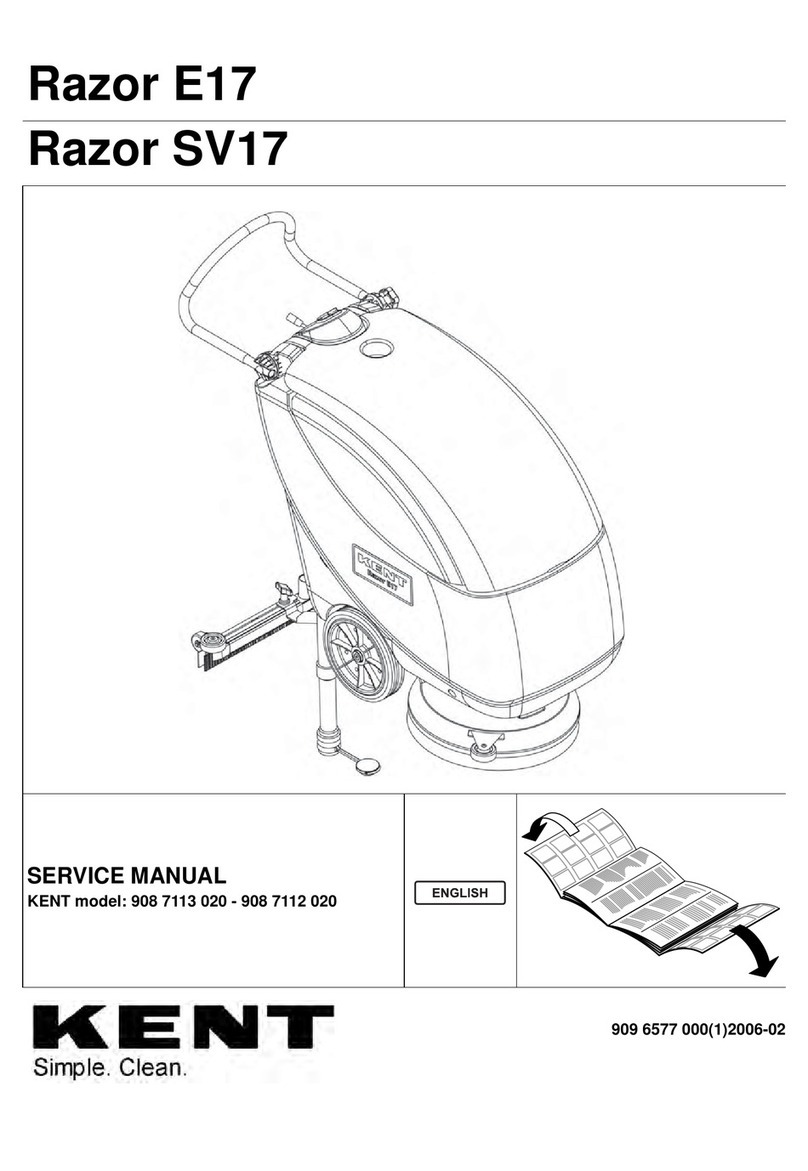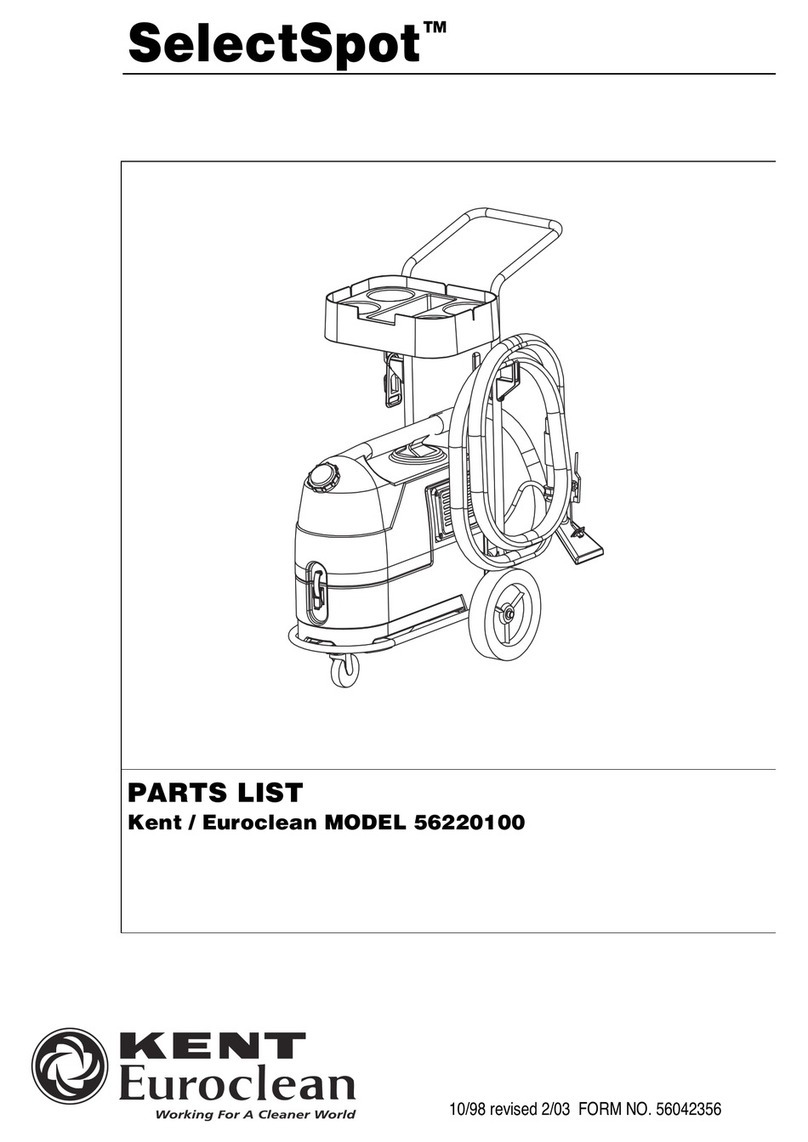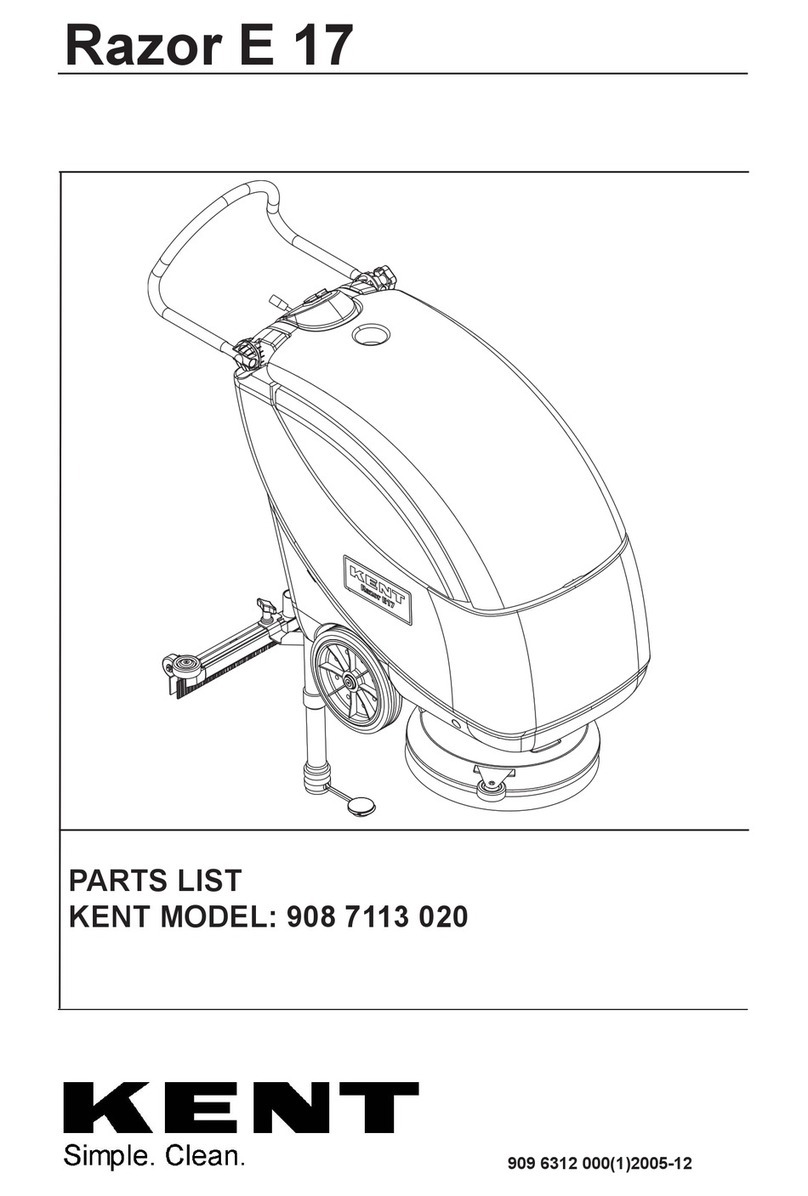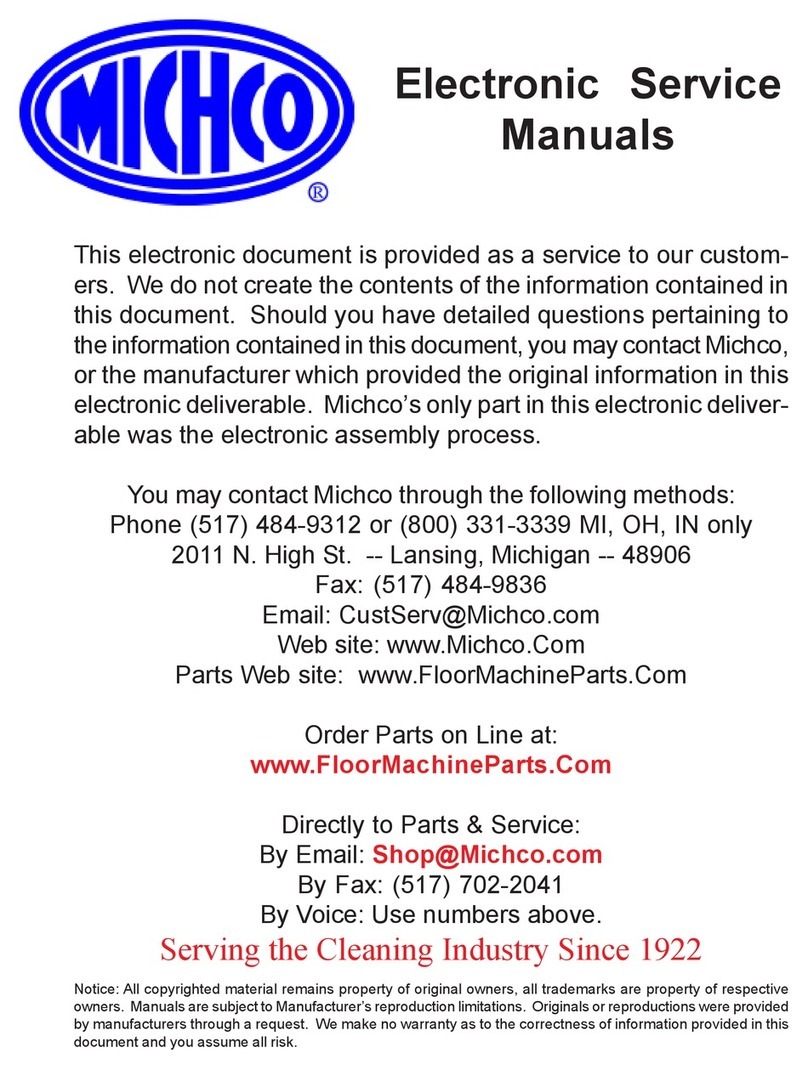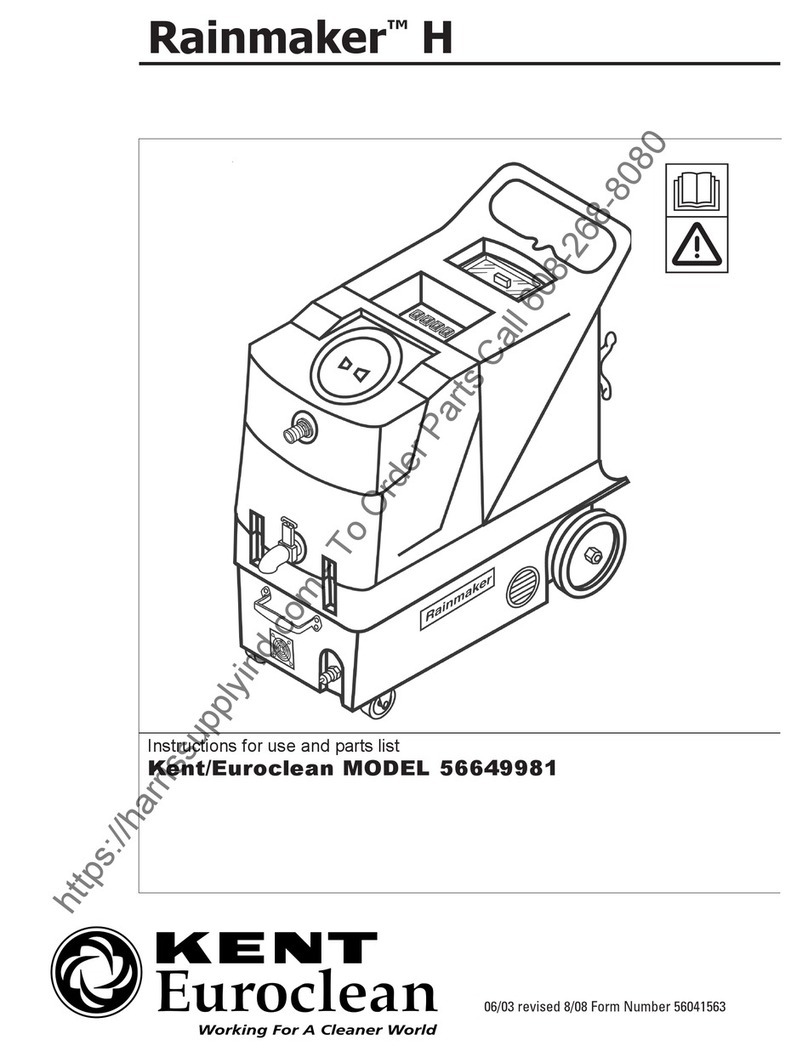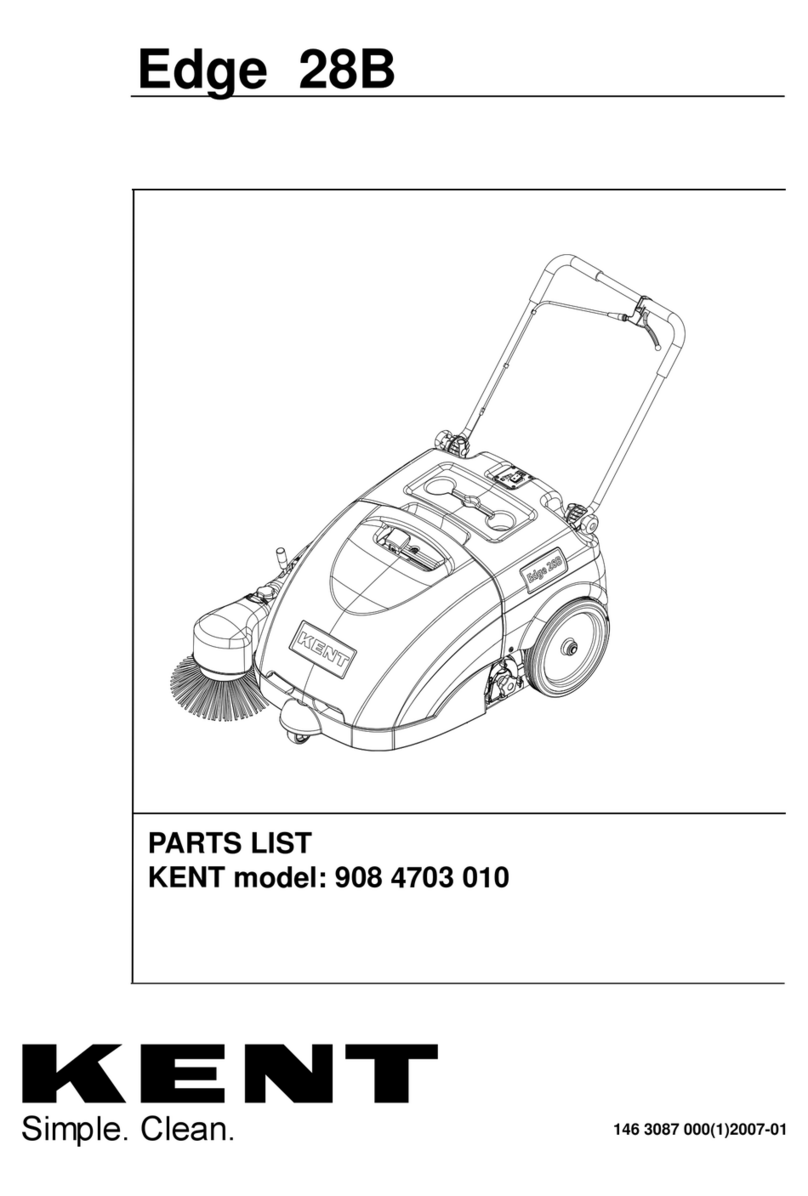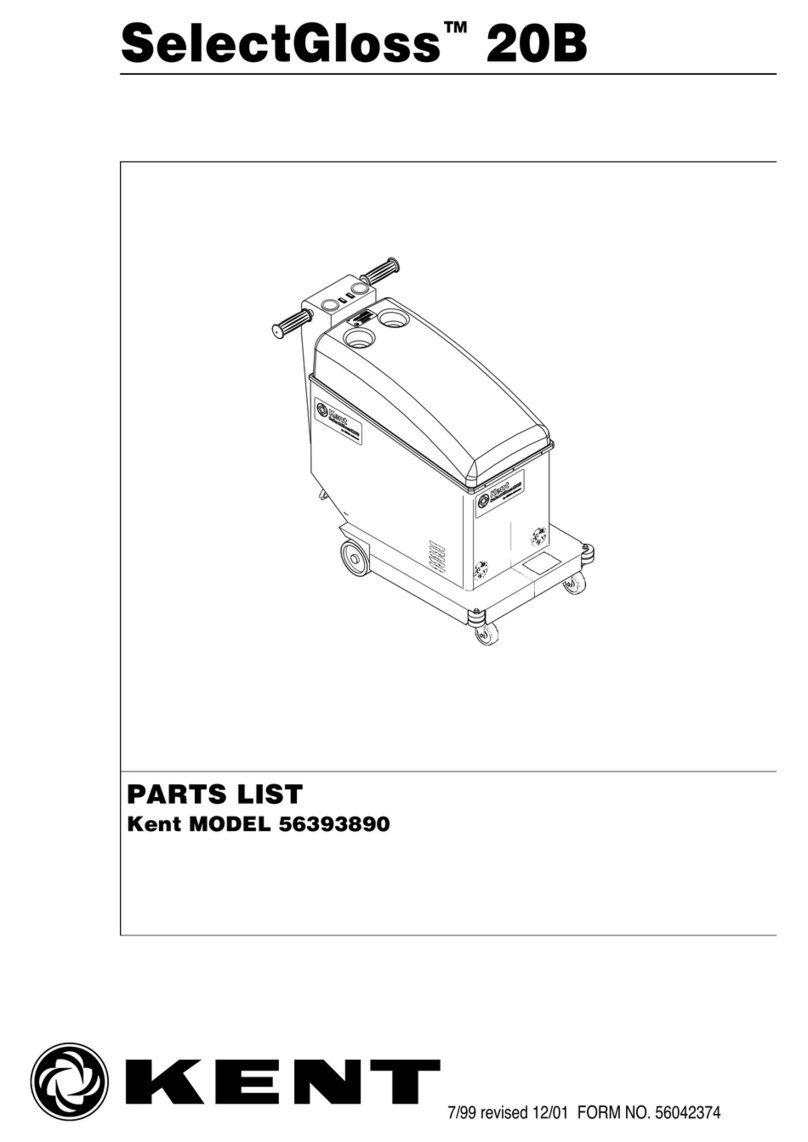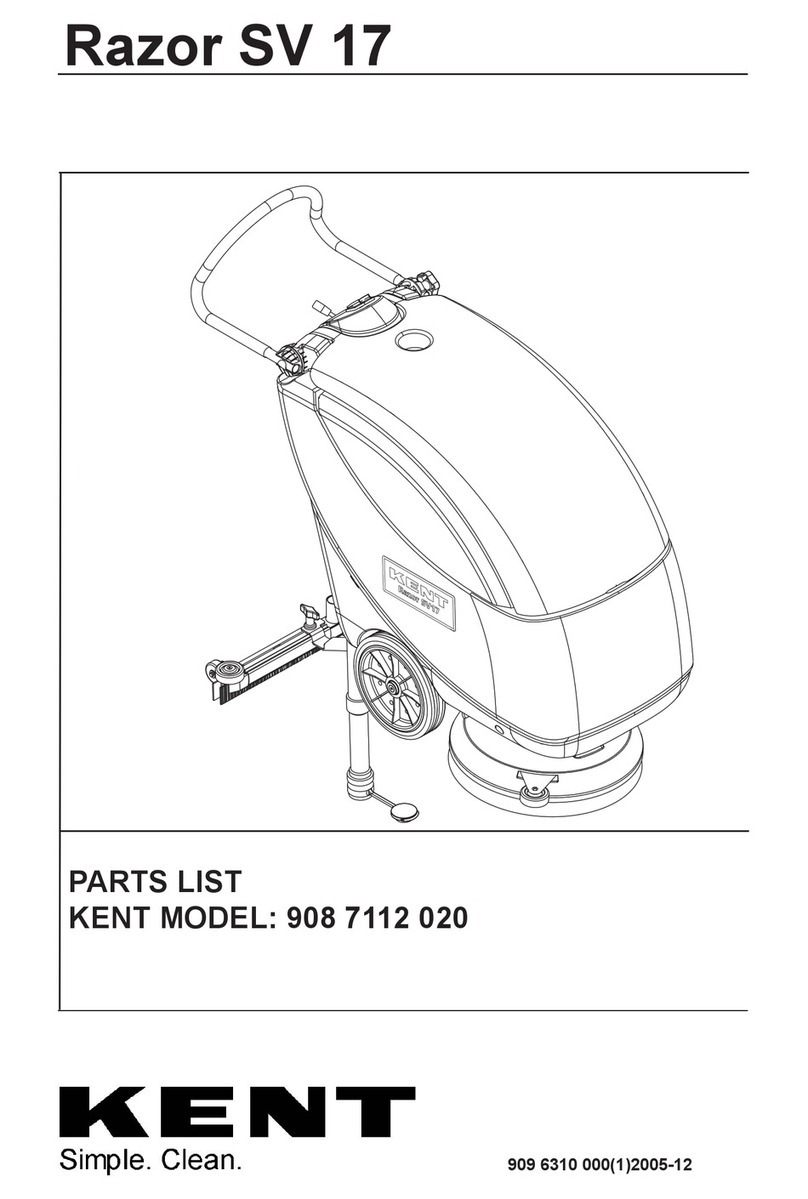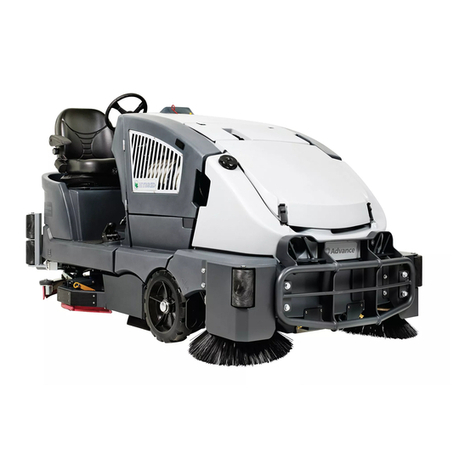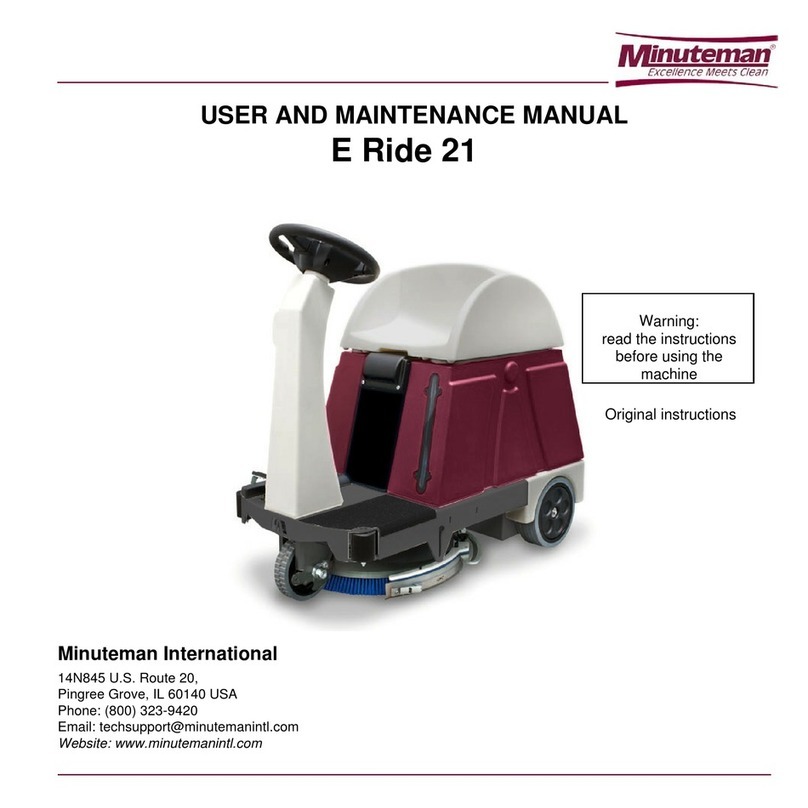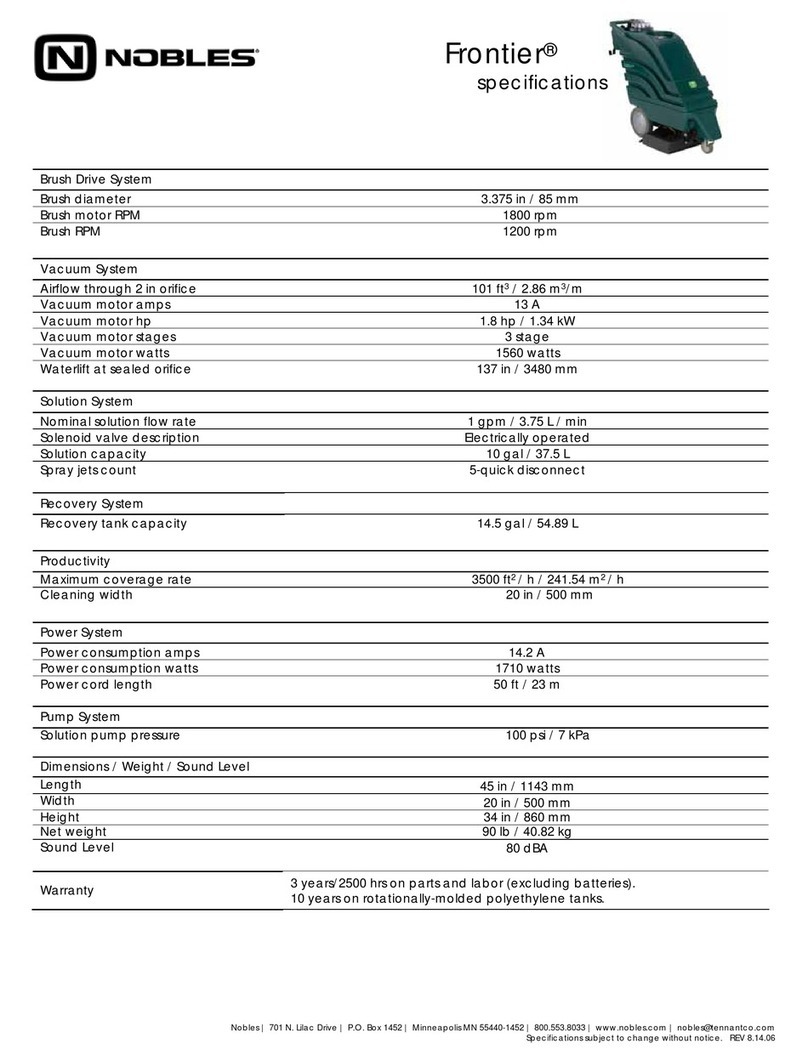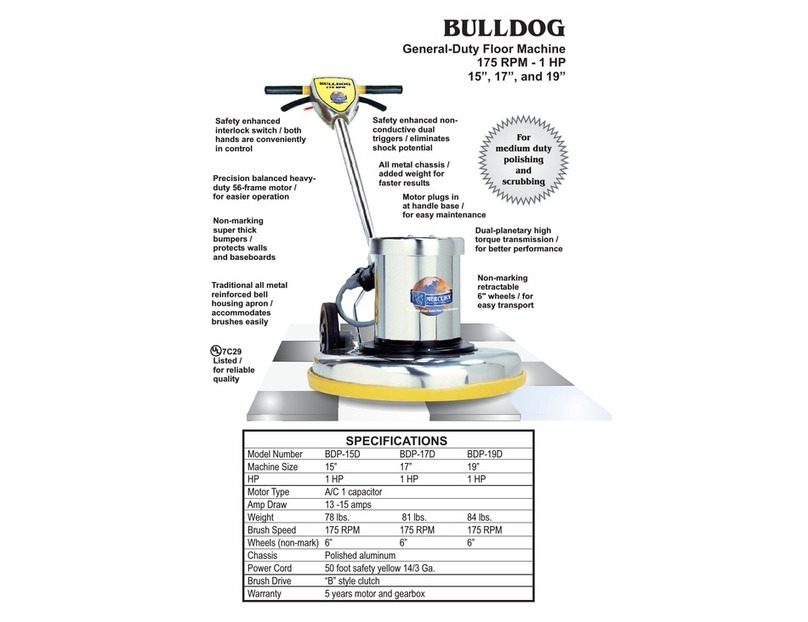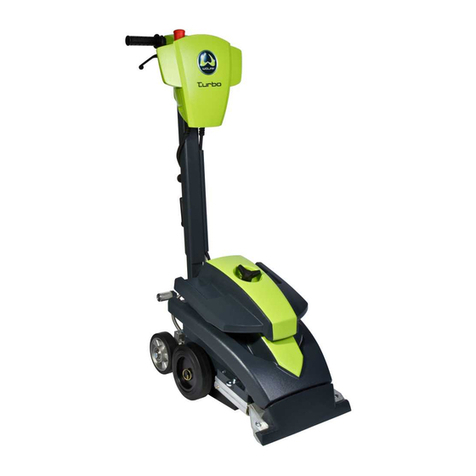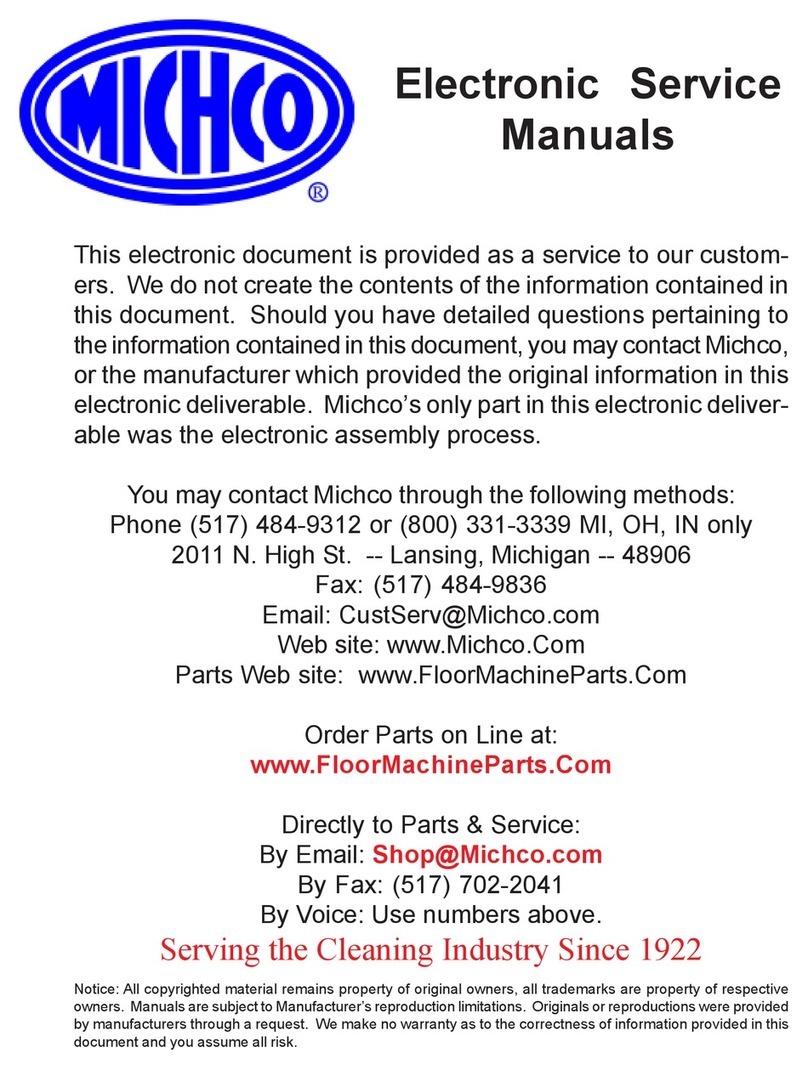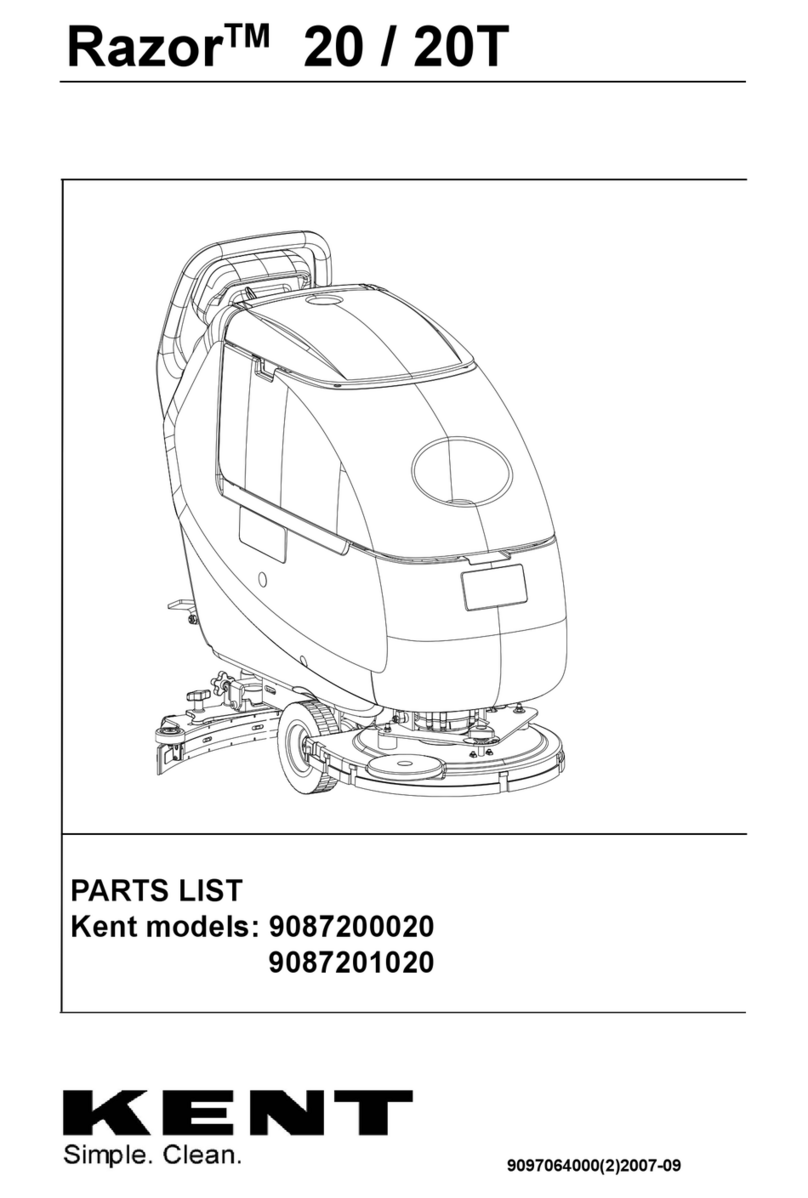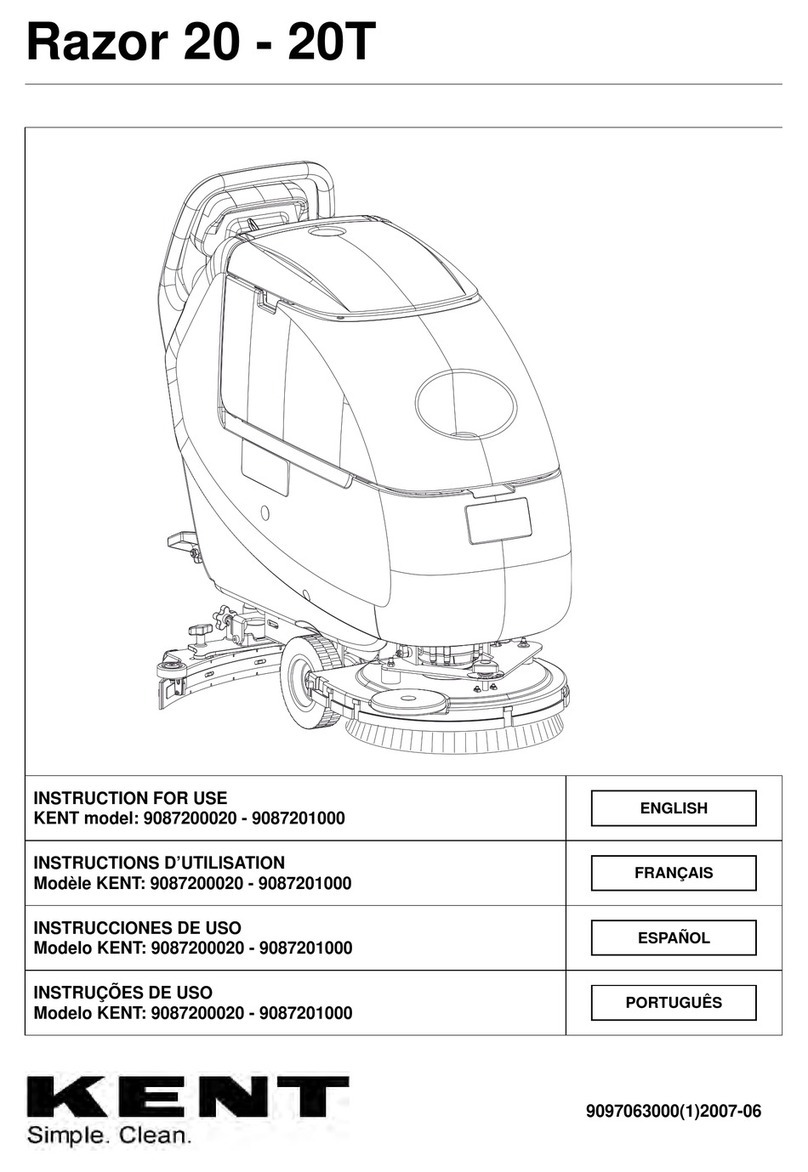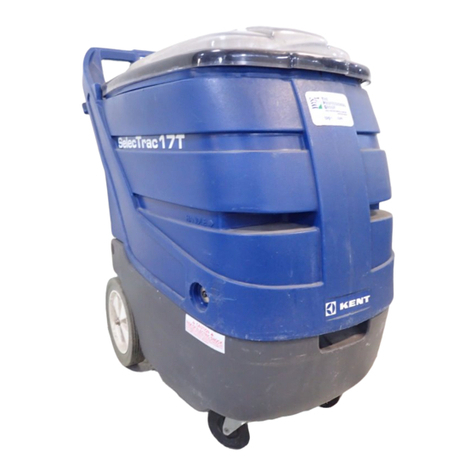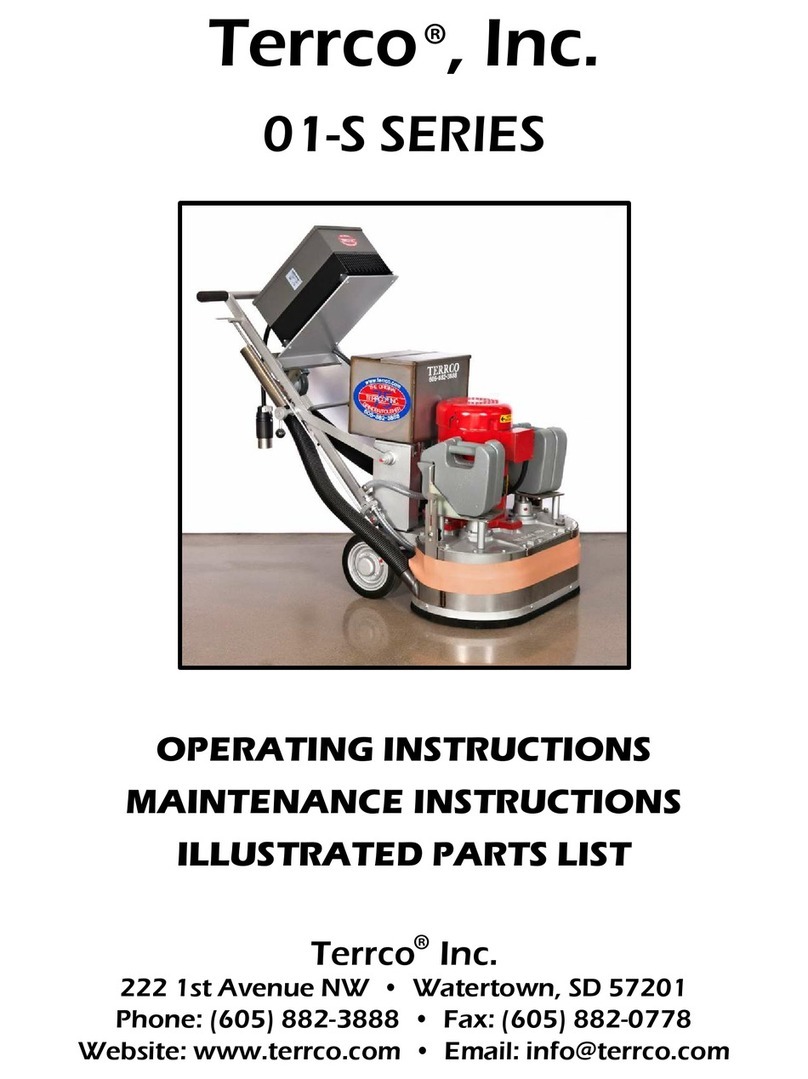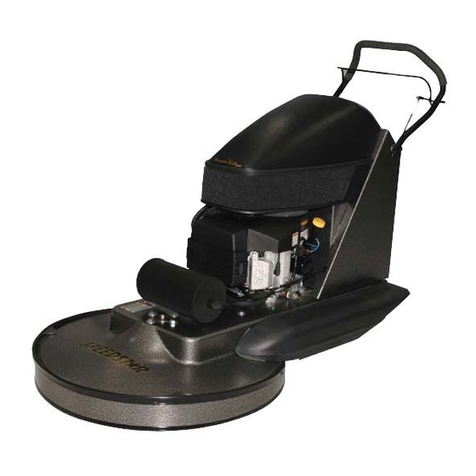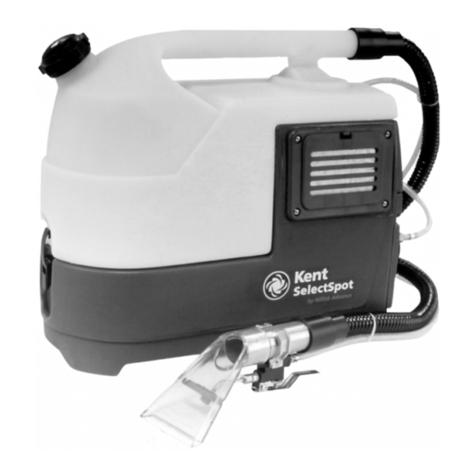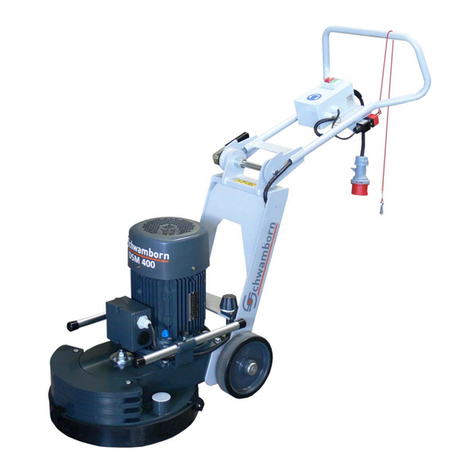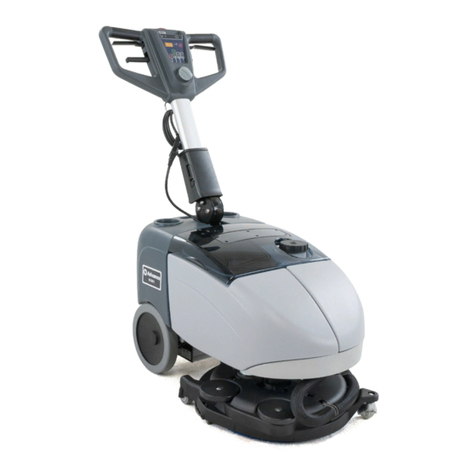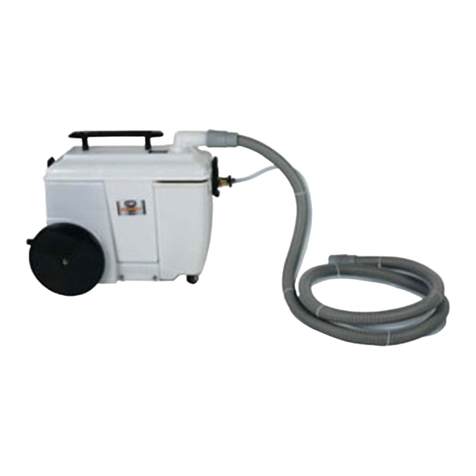INSTRUCTIONS D'UTILISATION
Razor E17 —909 6311 000(1)2006-01 3
SECURITE
On utilise la symbologie suivante pour signaler les conditions
de danger potentielles. Lire attentivement ces informations et
prendre les précautions nécessaires pour protéger les
personnes et les choses.
Pour éviter tout accident la collaboration de l'opérateur est
essentielle. Aucun programme de prévention des accidents
du travail ne peut résulter efficace sans la totale collaboration
de la personne directement responsable du fonctionnement
de la machine. La plupart des accidents qui peuvent survenir
dans une entreprise, pendant le travail ou les déplacements,
sont dus à l’inobservance des plus simples règles de
prudence. Un opérateur attentif et prudent est la meilleure
garantie contre les accidents du travail et se révèle
indispensable pour compléter n’importe quel programme de
prévention.
SYMBOLES
INSTRUCTIONS GENERALES
Les avertissements et précautions spécifiques suivants
informent sur les potentiels risques de dommage à la
machine ou aux personnes.
– Débrancher le câble d'alimentation du réseau électrique,
avant d'effectuer toute opération d'entretien/réparation.
– Cette machine doit être utilisée uniquement par un
personnel adéquatement formé et autorisé. L’utilisation
de la machine est interdite aux enfants et aux personnes
handicapées.
– Ne pas porter de bijoux quand on travaille près de
composants électriques.
– Ne pas opérer avec cette machine en présence de
poudres, liquides ou vapeurs nuisibles, dangereux,
inflammables et/ou explosifs.
– Avant d'effectuer toute activité d'entretien/réparation,
lire attentivement toutes les instructions qui concernent
l'entretien/réparation.
– Avant de brancher la machine au réseau électrique,
s'assurer que la fréquence et la tension indiquées sur la
plaque (1, Fig. C) coïncident avec la tension de réseau.
– Pour réduire le risque d'incendie, choc électrique ou
blessures, ne pas laisser la machine sans surveillance
lorsqu'elle est branchée au réseau électrique.
Débrancher la machine de la prise de courant lorsqu'on
n'utilise pas la machine et avant d'effectuer toute
opération d'entretien.
– Afin d'éviter le risque de choc électrique, ne pas exposer
la machine à la pluie. Garder la machine dans un endroit
couvert.
– Ne pas laisser que la machine est utilisée comme jouet.
Faire attention lorsque la machine est utilisée à
proximité des enfants.
– Ne pas utiliser à des fins autres que celles prévues dans
ce manuel. Utiliser seulement les accessoires
recommandés par KENT.
– Ne pas utiliser la machine si le câble d'alimentation ou la
fiche sont endommagés. Si la machine ne fonctionne
pas correctement, si elle est endommagée, laissée à
l'extérieur ou tombée dans l'eau, la porter auprès d'un
Service après-vente autorisé.
– Si le câble d'alimentation ou la fiche présentent des
traces d'abrasion ou s'ils sont endommagés, il est
nécessaire de les remplacer immédiatement dans un
Service après-vente autorisé.
– Ne pas utiliser le câble d'alimentation pour tirer ou
transporter la machine et ne pas utiliser le câble comme
poignée. Ne pas fermer de porte sur le câble
d'alimentation, ne pas tirer le câble sur des surfaces ou
coins tranchants. Ne pas faire passer la machine sur le
câble d'alimentation. Tenir le câble d'alimentation
éloigné des surfaces chaudes.
– Ne pas utiliser le câble d'alimentation pour débrancher la
machine de la prise de courant. Pour débrancher la
machine, saisir la fiche et non le câble.
– Ne pas toucher la prise de courant ou la machine avec
les mains mouillées.
– Eteindre toutes les commandes avant de débrancher la
machine de la prise de courant.
– Prendre les précautions convenables afin que les
cheveux, les bijoux et les parties non adhérentes des
vêtements ne soient pas capturés par les parties en
mouvement ou aspirantes de la machine.
– Ne pas travailler sous la machine soulevée, sans des
supports fixes de sécurité convenables.
– Avant de laisser la machine sans surveillance, veiller à
ce que celle-ci ne puisse pas bouger de façon
autonome.
– Ne pas utiliser sur des surfaces dont l'inclinaison est
supérieure à celle indiquée sur la machine.
– Ne pas laver la machine avec des jets d’eau directs ou
sous pression ou avec des substances corrosives.
DANGER !
Indique un danger qui comporte des risques,
ou même la mort, pour l’opérateur.
ATTENTION !
Indique une situation exposant les personnes
au risque de blessures.
AVERTISSEMENT !
Indique un avertissement ou une remarque sur
des fonctions clé ou utiles. Prêter la plus
grande attention aux segments de texte
marqués par ce symbole.
REMARQUE
Indique la nécessité de consulter les
Instructions d'utilisation avant toute opération.
DANGER !
ATTENTION !




















